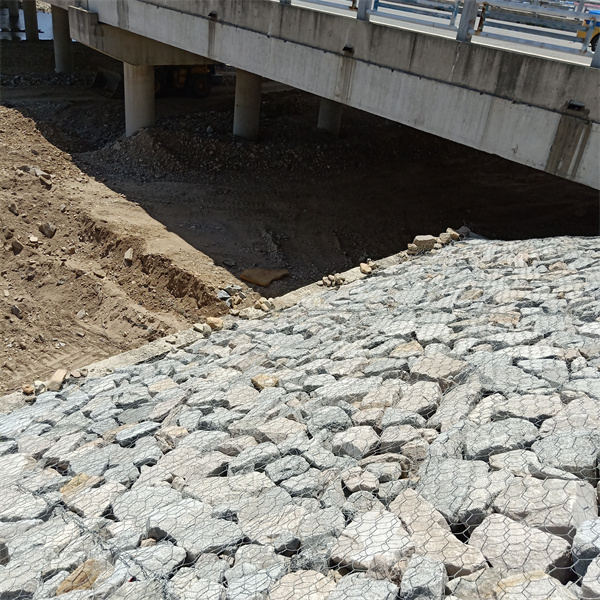nov . 08, 2024 08:51 Back to list
Durable Plastic Gabions for Enhanced Landscape Design and Erosion Control Solutions
The Emerging Trend of Plastic Gabions in China
In recent years, the construction industry in China has witnessed a significant shift towards sustainable practices. One of the most innovative developments in this direction is the use of plastic gabions. Traditionally constructed from metal wire, gabions are boxes or cages filled with rocks or soil, commonly used in civil engineering, road building, and landscape architecture. However, the introduction of plastic gabions is revolutionizing this age-old construction technique.
What are Plastic Gabions?
Plastic gabions are essentially similar to traditional gabions in terms of structure; they are cages or containers designed to be filled with various materials. The key difference lies in their construction material. Instead of being made from steel, plastic gabions are constructed from high-density polyethylene (HDPE) or similar synthetic materials. These materials offer several advantages over traditional metal wire, including increased durability, resistance to corrosion, and a lower environmental impact.
Benefits of Plastic Gabions
1. Durability and Longevity One of the significant advantages of plastic gabions is their resistance to corrosion and rust. In harsh environmental conditions, metal gabions can deteriorate over time, leading to structural failure. Plastic gabions are designed to withstand extreme weather conditions, providing a longer service life with lower maintenance costs.
2. Environmental Impact With a global emphasis on sustainability, plastic gabions align well with eco-friendly construction practices. Many plastics used in constructing these gabions are recyclable, reducing waste in landfills. Furthermore, the use of plastic reduces the extraction of natural resources, as there is less reliance on mined materials.
3. Lightweight and Easy to Handle The lightweight nature of plastic gabions makes them easier to transport and install compared to their metal counterparts. This is especially beneficial in remote or challenging terrains where heavy machinery cannot operate effectively. The ease of handling contributes to lower labor costs and faster construction timelines.
4. Aesthetic Versatility Plastic gabions can be produced in various colors and designs, allowing for creative and aesthetically pleasing applications in landscape architecture. This flexibility enables designers to blend structures harmoniously with the natural environment or create bold architectural statements.
Applications of Plastic Gabions
china plastic gabion

Plastic gabions are incredibly versatile and have a range of applications
- Soil Erosion Control These structures can effectively slow down soil erosion on slopes and riverbanks. By filling plastic gabions with vegetation or topsoil, they can promote plant growth while stabilizing the soil.
- Retaining Walls In both residential and commercial construction, plastic gabions can be used to create effective retaining walls. Their interlocking nature allows for flexibility in design while providing structural integrity.
- Flood Management Plastic gabions can be used to build barriers that protect against flooding. Their ability to absorb and redistribute water makes them an ideal solution for flood-prone areas.
- Landscaping Features Beyond functional use, plastic gabions can be incorporated into landscaping designs. They can act as decorative features, seating areas, or even vertical gardens when filled with appropriate materials.
Challenges and Considerations
Despite the many benefits, the adoption of plastic gabions in China is not without its challenges. Concerns about the longevity of plastic materials under varying environmental conditions persist, and ongoing research is necessary to assess their long-term performance. Additionally, there may be regulatory hurdles regarding the use of plastics in construction, as the industry continues to grapple with waste management issues.
Conclusion
As China navigates the balance between rapid urbanization and environmental sustainability, plastic gabions present an innovative solution to many of the challenges facing the construction industry. Their durability, environmental benefits, and versatile applications make them a promising alternative to traditional materials. Moving forward, continued investment in research and development, alongside effective regulations, will be crucial to fully realize the potential of plastic gabions in China's evolving landscape. The transition to this sustainable construction method not only addresses immediate engineering needs but also represents a commitment to a greener future.
-
Versatility of Chain Link Fence Gabion
NewsMay.13,2025
-
Trusted Gabion Box Suppliers
NewsMay.13,2025
-
PVC Coated Gabion for Long-Lasting Structural Integrity
NewsMay.13,2025
-
Garden Gabion for Stylish
NewsMay.13,2025
-
Galvanized Gabion for Durable Outdoor Structures
NewsMay.13,2025
-
Gabion Box Factory
NewsMay.13,2025
-
Gabion Basket Wire Gauge and Mesh
NewsMay.13,2025






